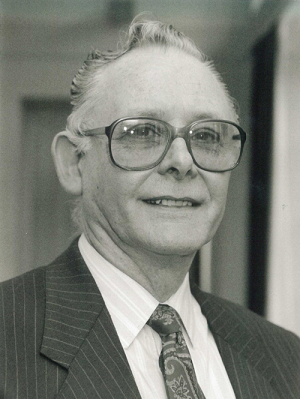by
Thomas Dworetzky, Contributing Reporter | February 16, 2017
Sir Peter Mansfield, who shared a Nobel Prize for his pioneering efforts developing magnetic resonance imaging, died Feb. 8 at age 83.
Dr. Mansfield had been an emeritus professor of physics at the University of Nottingham in England since 1994.
He won the Nobel Prize in Physiology or Medicine in 2003, which he shared with the late Paul C. Lauterbur, a professor at the University of Illinois at Urbana-Champaign, who died in 2007.



Ad Statistics
Times Displayed: 174795
Times Visited: 3187 For those who need to move fast and expand clinical capabilities -- and would love new equipment -- the uCT 550 Advance offers a new fully configured 80-slice CT in up to 2 weeks with routine maintenance and parts and Software Upgrades for Life™ included.
Lauterbur invented the MR technique in the 1970s. Mansfield invented echo-planar imaging (EPI), which cut scan times “dramatically,”
according to his RSNA obituary.
He achieved this thanks to an idea he had while stuck at a traffic light, Peter Morris, head of Sir Peter Mansfield Imaging Centre at the University of Nottingham,
wrote in The Conversation.
EPI “made it possible to produce 100 images per second, fast enough to “freeze” cardiac motion,” explained Morris. “However, it was technically challenging and would not be offered in commercial systems for another decade or more. Again, it was Mansfield’s own characteristic dogged determination to solve a problem coupled with a brilliant mind that saw him provide the solution that made it possible.”
Today, all know that MR is safe. But when Mansfield became the first human test subject for a full body scan in 1978, questions about its safety could be found in papers circulating in his own lab.
“There was even speculation it could cause an instant heart attack,” Morris advised.
Mansfield made sure his will was correct and his wife Jean “insisted she be present,” during that trial, he noted.
“He was the guinea pig,” Nottingham Professor Richard Bowtell, and a graduate student of Mansfield’s
told the New York Times. “He went into the scanner. There was the worry it would knock him dead.”
Born in London on Oct. 9, 1933, Mansfield left school when he was age 15 to apprentice himself to a printer. He went on to work at England's Rocket Propulsion Department,
according to The Scientist. He returned to school, eventually graduating from what is now Queen Mary University London, during which time he became involved in work on nuclear magnetic resonance, then mostly used for chemical analysis.
At that time he “astounded the NMR research community by demonstrating that an NMR signal thought to be lost could be recovered and used,” stated Morris.
His efforts earned him more than a Nobel Prize and world acclaim, however. It earned him gratitude.
In a
message of condolence placed on a University of Nottingham message board noting Mansfield's passing, Robert Austin summed up what must be the thoughts of many people around the world, when he stated simply, “Your genius created an image where no eye could see. Thank you for my life.”

